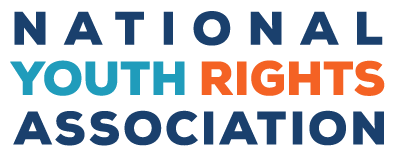When it comes to mainstream society’s understanding of the adolescent brain, we are often limited to research which perpetuates harmful stereotypes and myths. Teenagers are lazy. Teens take stupid and dangerous risks. They’re impulsive and obsessed with approval from peers. While the people who stand by these stereotypes may point to neuroscience as evidence for their beliefs, the “proof” they often demonstrate as sufficient reasoning for restricting youth rights is far from accurate. Yes, teenagers may be more predisposed to “risk-taking behaviors”, but the explanation for this development is far more complex than initially imagined. “Teenagers may actually be better than adults at certain types of learning,” says Juliet Davidow, a postdoctoral researcher at Harvard University’s Affective Neuroscience and Development Lab in a study published in the journal Neuron. The reason? Teens have a natural drive for seeking rewards, and their brains are primed to learn from such rewards in a way that’s more difficult for adults to accomplish.
The understanding of this phenomenon lies in a brain structure called the striatum, located in the basal ganglia of the forebrain. When you experience something good or pleasure-inducing, such as taking a bite into a chocolate bar, your brain produces the pleasure hormone dopamine and activates a response in the striatum. According to Dr. Davidow, “research shows that the teenage striatum is very active”. This is important because when the striatum collaborates with the hippocampus, the part of the brain responsible for memory formation, the process of learning from rewards occurs.
To illustrate this further, it would be helpful to explain a study performed by Daphna Shohamy, a cognitive neuroscientist at Columbia University’s Zuckerman Mind Brain Behavior Institute, who wished to figure out if adolescents would be better suited than adults to learn from rewards. Shohamy and her fellow researchers set up an experiment in which neural activity in the striatum and the hippocampus of both adolescent and adult participants were monitored by an fMRI scanner. As the fMRI scanned the brains of both sets of participants, they were asked to play a game which would reward them for giving correct answers, and in between games, they were shown random pictures of ordinary objects. Results showed that not only did the teens solve the game more quickly than the adults did, but also that the striatum cooperated more extensively with the hippocampus in adolescent brains. Then, later in the study, both sets of participants were asked to complete a memory task in which the aim was to remember pictures that were flashed on screen during the task. When an image was connected to answering a question correctly in the learning task, teens were more likely to recall the picture than their adult counterparts. Shohamy found that a behavior which is typically put in a negative light by adults may actually make adolescents better at remembering important information, and the neuroscientist herself was even surprised by how little we know about the teen brain.
Dr. Davidow and Dr. Shohamy are not the only neuroscientists who despise the lazy teenage brain myth. In fact, Dr. B.J. Casey at Yale University in Connecticut finds the commonly used metaphor of the teenage brain as a “defective car” to be both insulting and unfair. Furthermore, related research has actually demonstrated results which contradict the myth entirely. In experiments which replicated the famous marshmallow test, which sought to understand how long children could wait before eating a marshmallow placed in front of them if they knew that waiting would reward them with more marshmallows, adolescents were able to wait much longer than children for the additional rewards. This highlighted a lower level of impulsivity in teens than in their children counterparts as well as a higher level of patience. Moreover, psychologist Dr. Dan Romer at University of Pennsylvania argues that studies focusing on the adolescent brain often make generalizations about all adolescents and rarely account for individual differences. Yes, there are teenagers out there who text and drive, use harmful drugs, or get wasted, but there also adults who do the exact same thing, yet no one is arguing that we should restrict their rights. What’s with the double standard? Not all teens are the same, just like not all adults are the same, and we need to start treating adolescents as individuals with their own choices and passions rather than grouping all of them together.
Of course, as stated previously, the science on the teen brain is extremely limited, and there are often contradictions in scientific research which makes arguments of this nature very confusing. We have studies which suggest that teens may be better at certain types of learning than adults, but we also have studies which suggest that brain development, specifically the maturation of the prefrontal cortex, may not be finished until the early 20s. Even then, there isn’t a specific age we can say is the definitive end of development. So what does that mean for youth rights? Should we scan a person’s brain every year until we conclude that it has finished maturing, and only then give them the rights to drink alcohol, drive a car, or vote? Of course not. Science may be able to guide us to a certain extent, but our access to certain freedoms is decided by we the people. And, as Martin Luther King Jr. once said, “No one is free until we are all free.” No scientific paper or report can change that.






Ah, I feel very stupid with the email I sent on about Dr. Daniel Romero, I did not know until after I sent the email. I do hope that whenever I get to college I can learn more, get my degree in human developmental psychology and help out in anyway I can to prevent more young people falling and failing since my own ages of 15 to and through 20 years of age.
Great article, however I would like to come back to the prefrontal cortex argument (fallacy?). If we take a look at anthropology and to which extent teens are infantilized (they are far beyond belief), it becomes more than plausible — almost sure — that PFC is not undeveloped. It would be more appropriate to say that it is atrophied since everything is decided for them. In other words, we delay PFC development by preventing them from taking any decision and withdrawing them any responsibility and freedom.
A blog about youth rights made a great analogy with infants learning to walk. When someone learns how to walk, falling is unavoidable, you need to fall to learn how to walk. If you prevent them to do so, they won’t be able to learn until you decide they are “developed enough”. They will still fall, therefore it will be decided that even more delaying walking is needed, creating a vicious circle.
This is exactly what is happening with decision making.